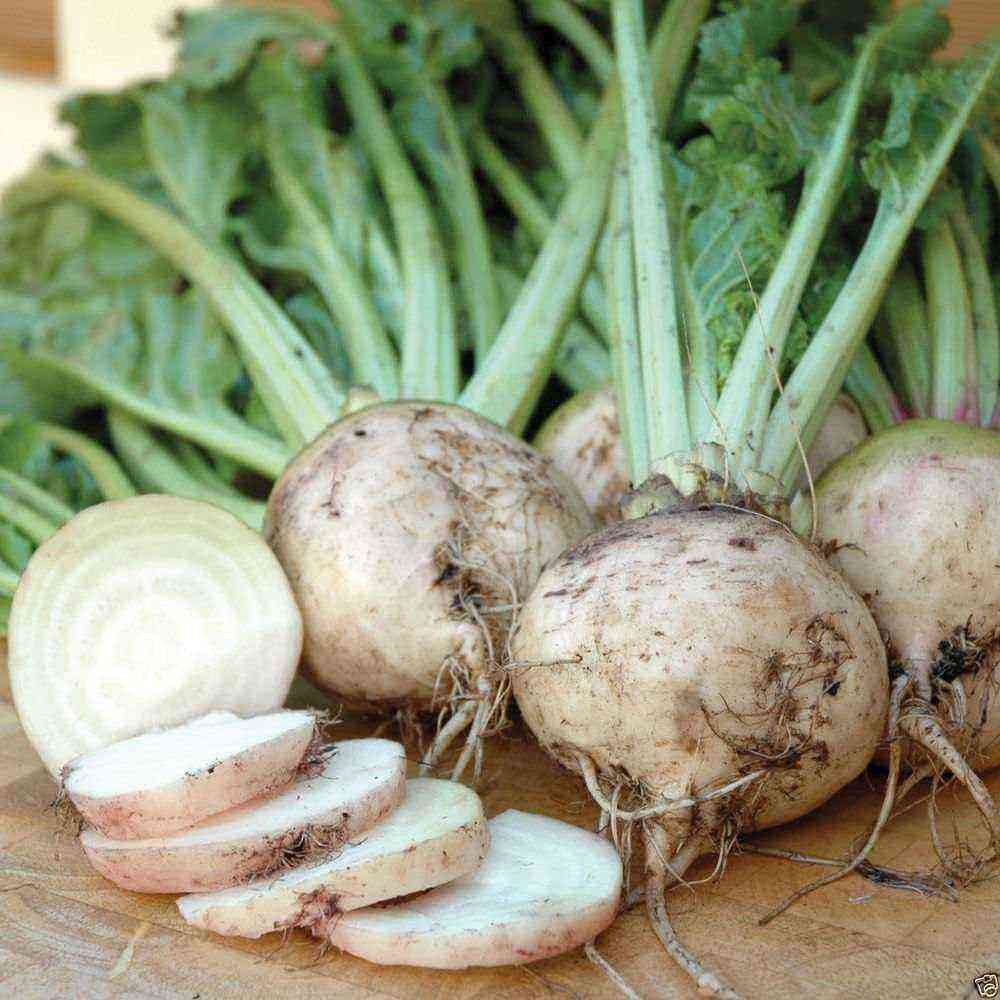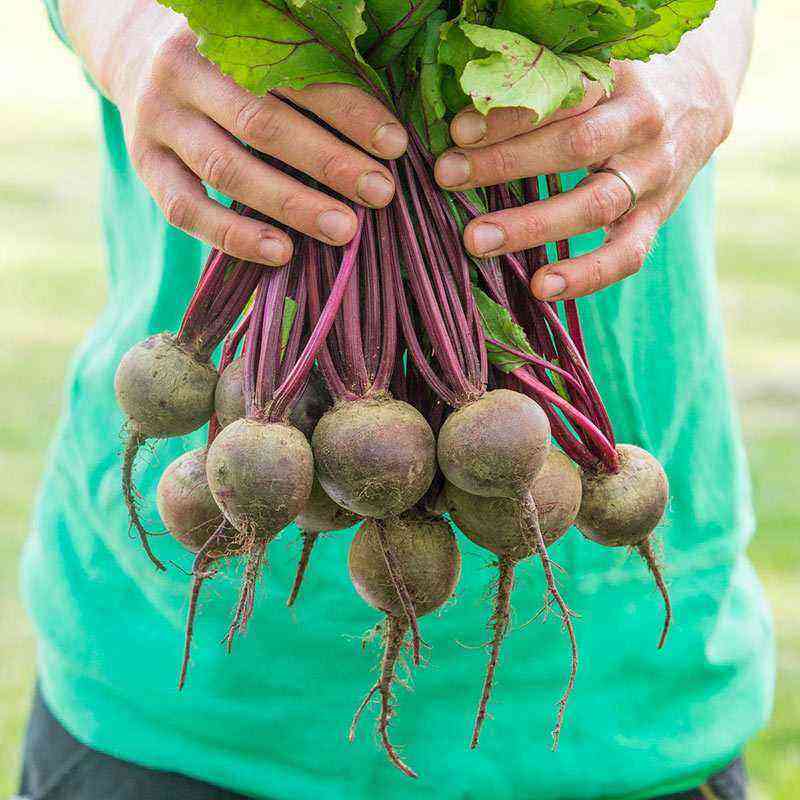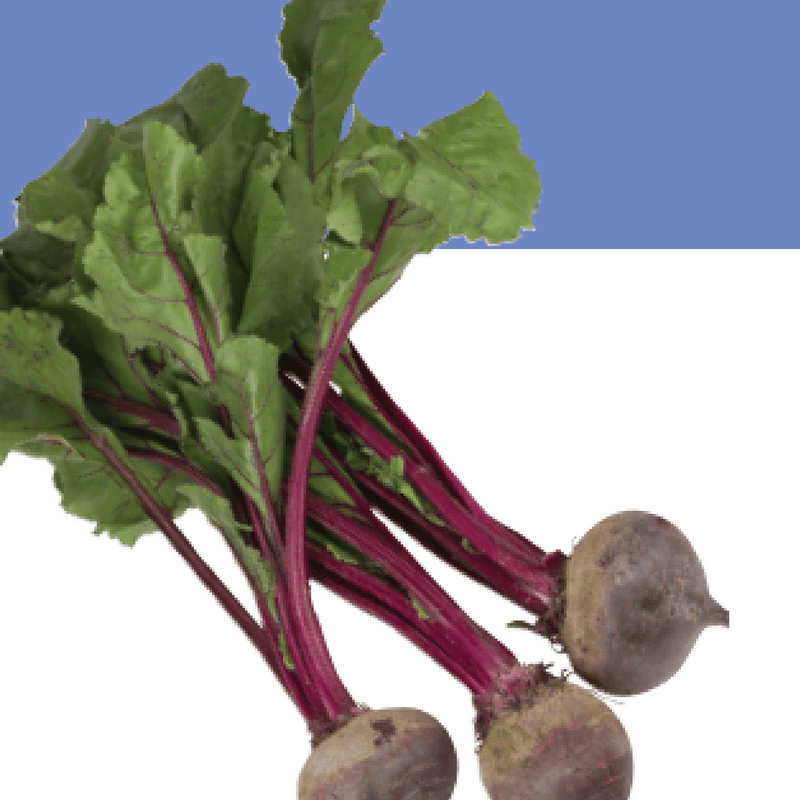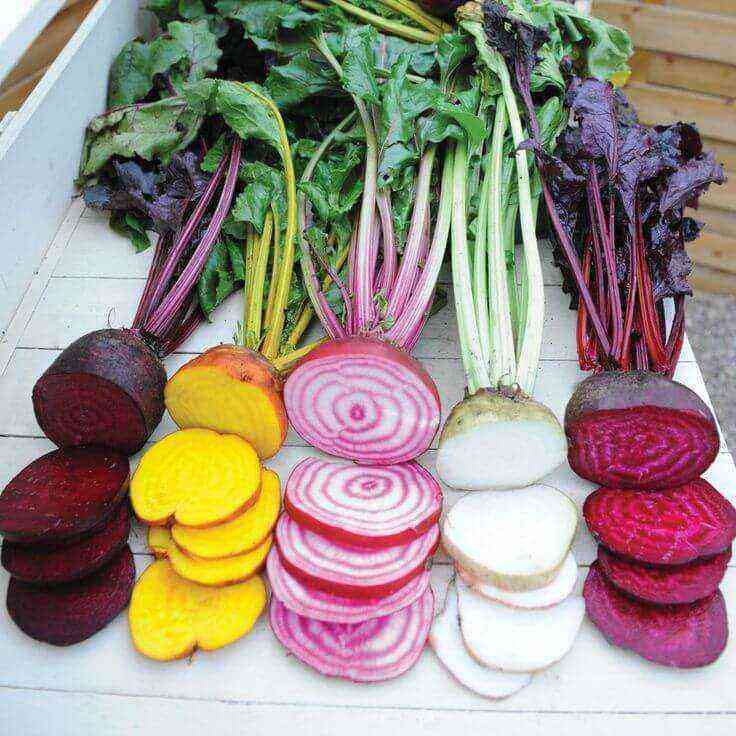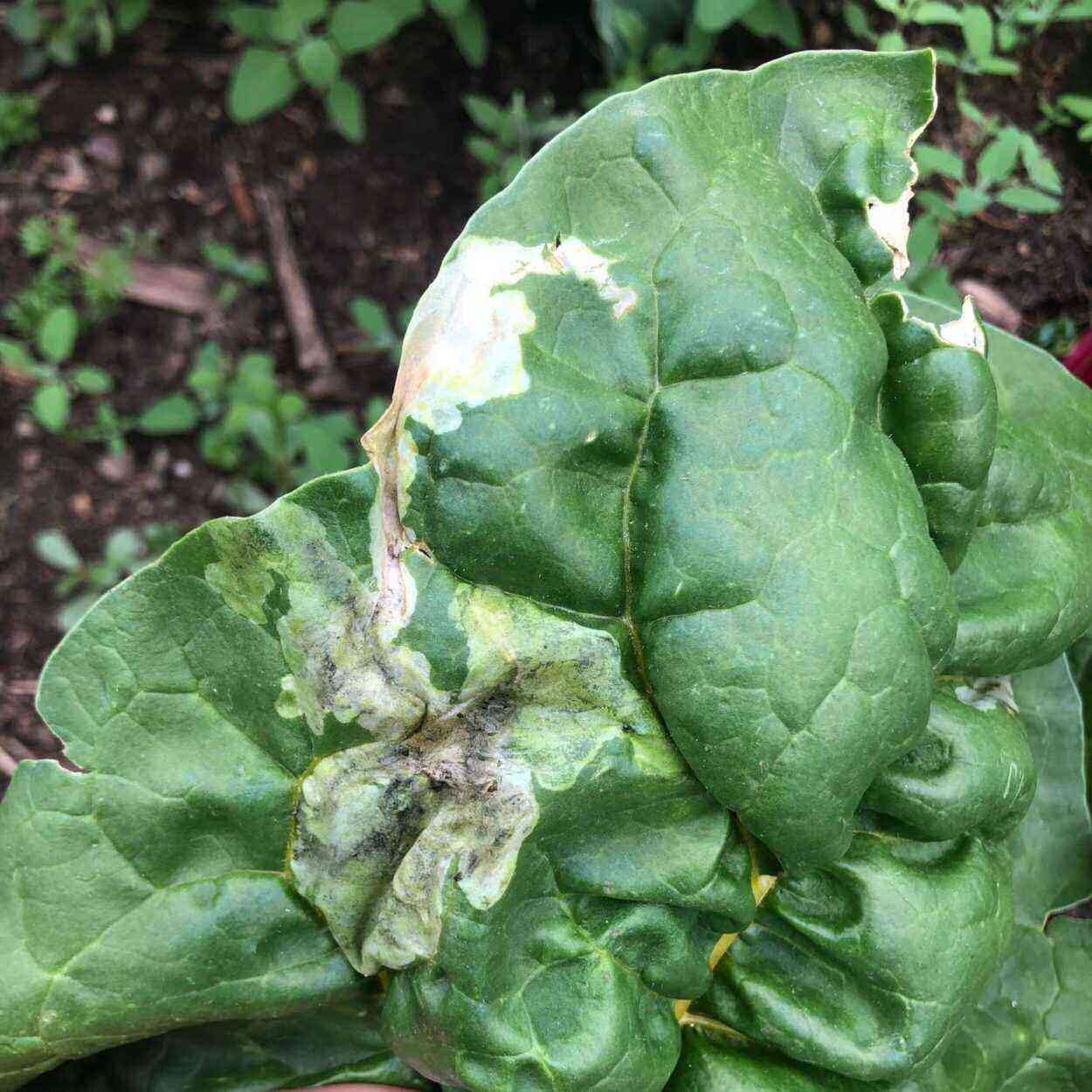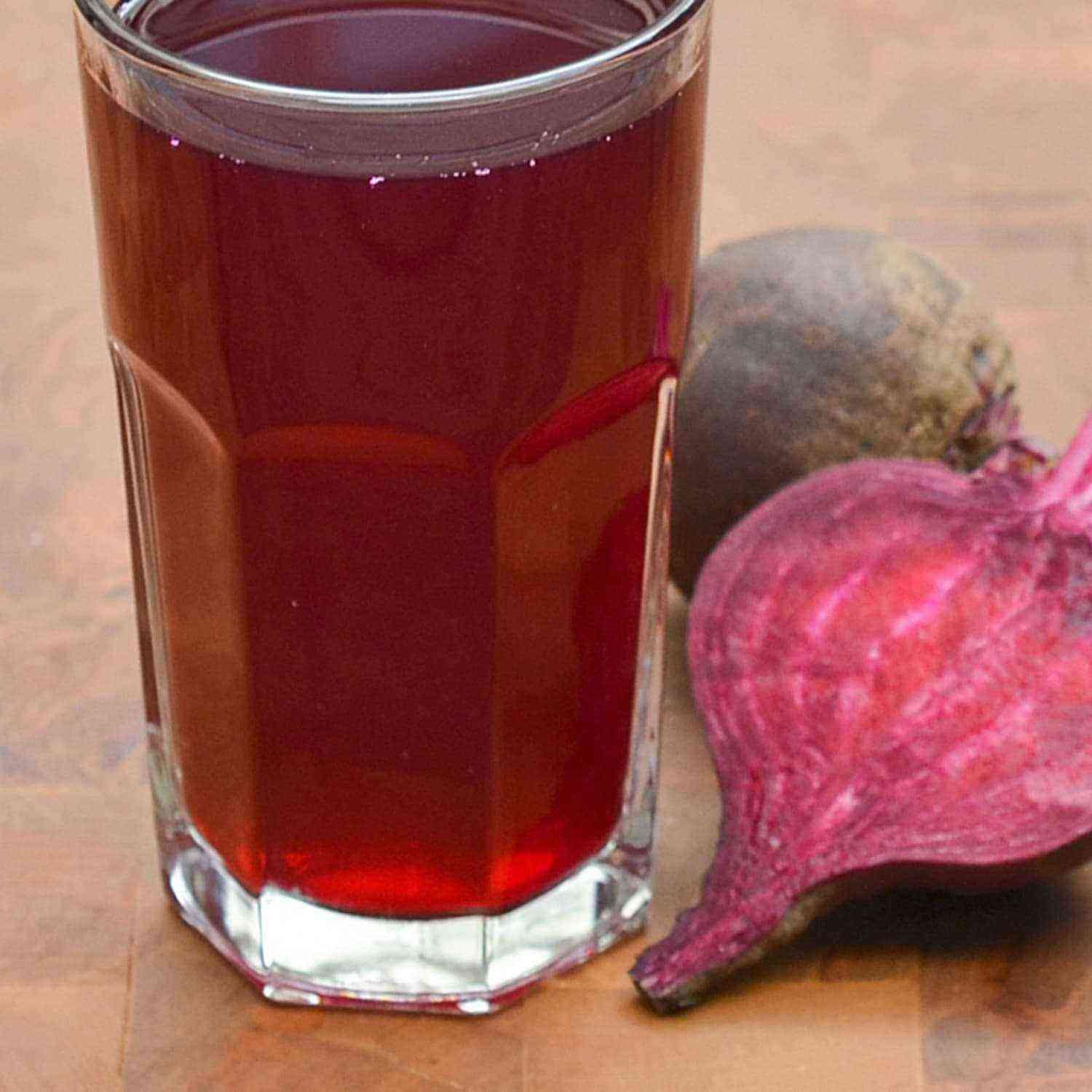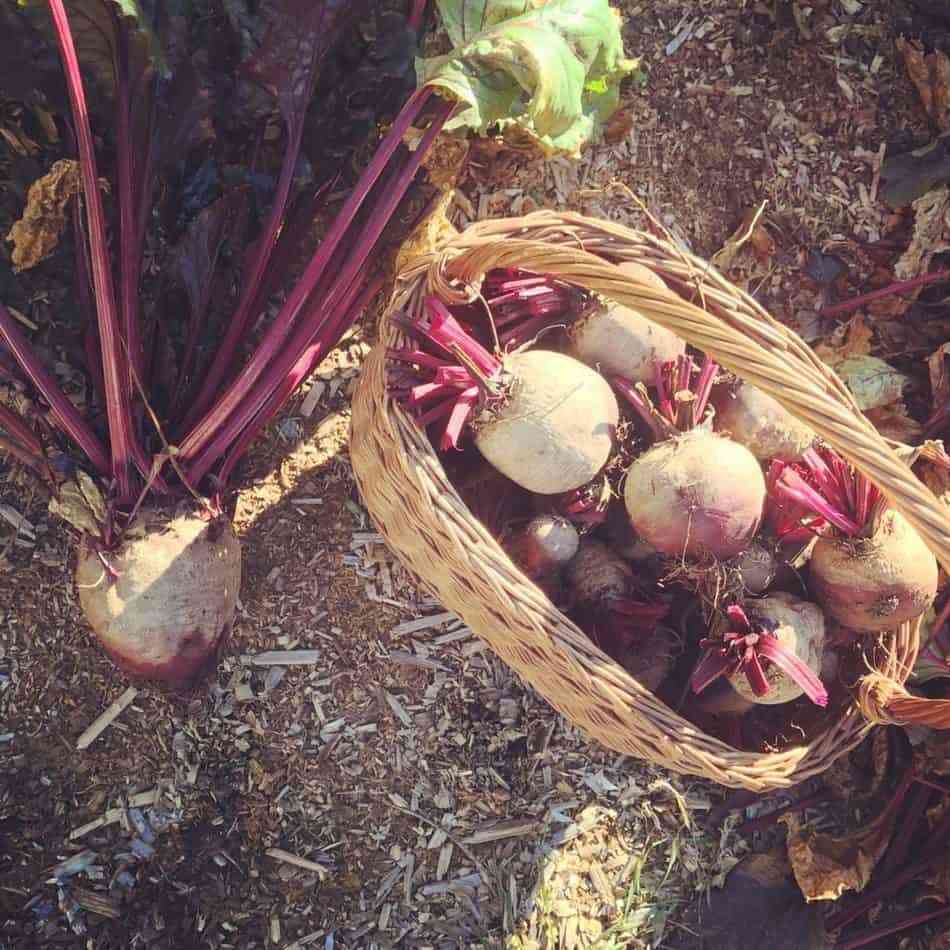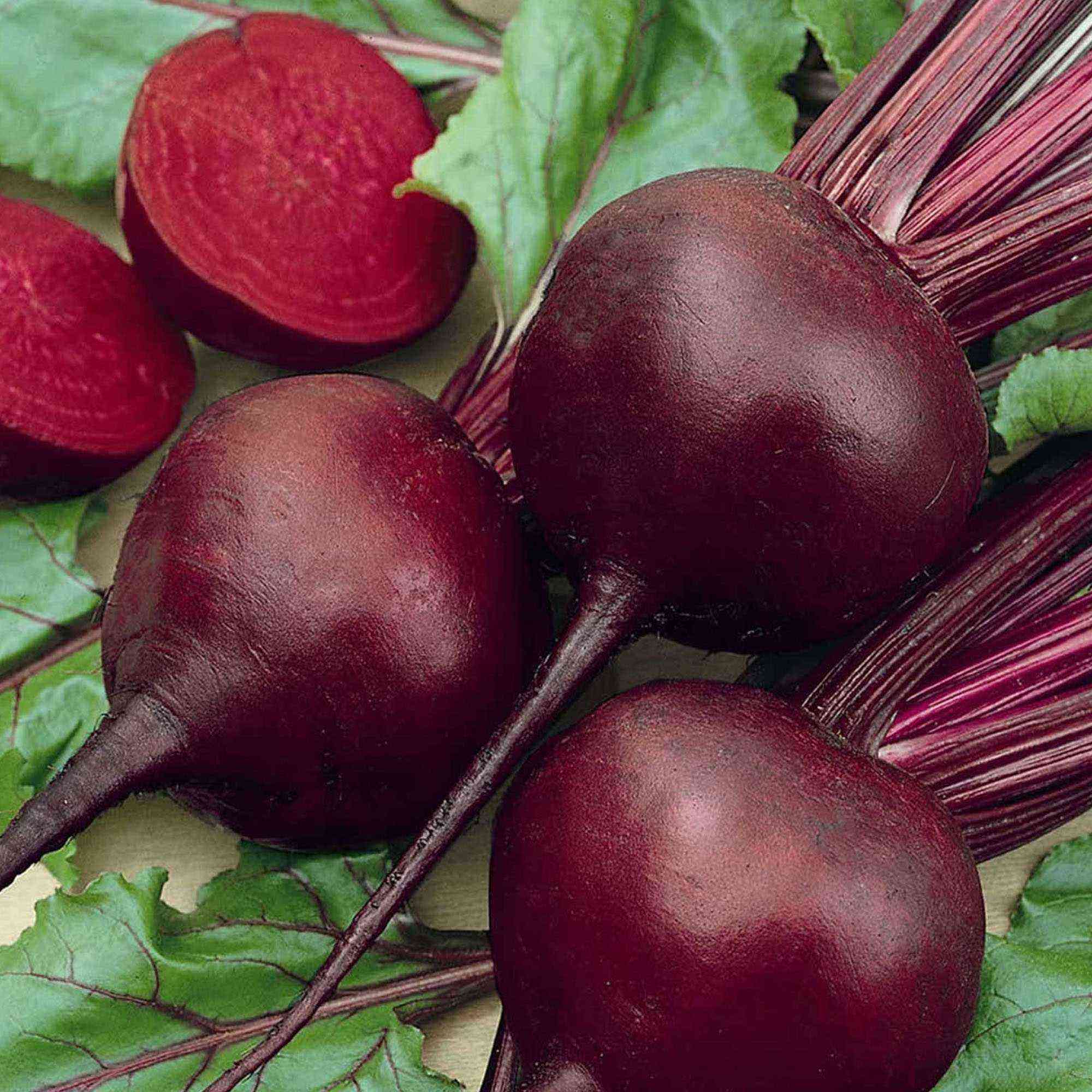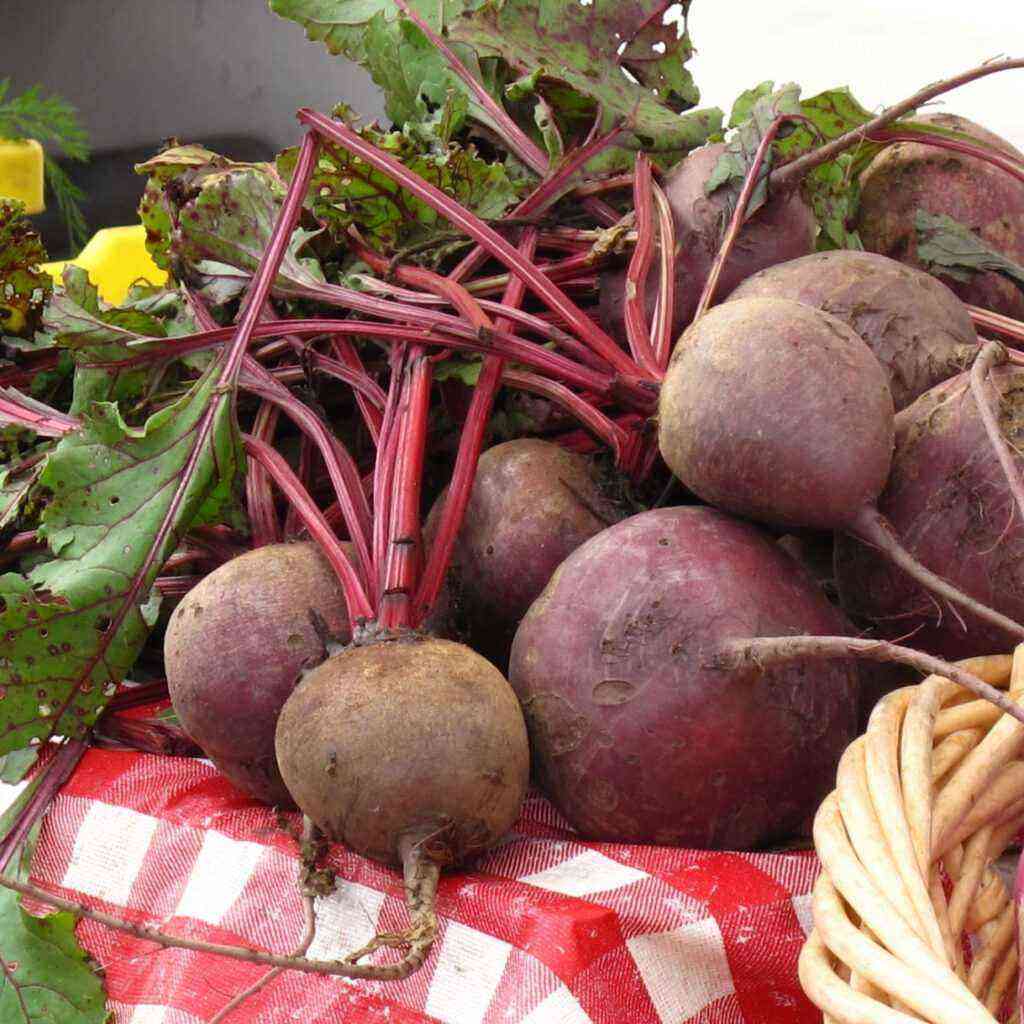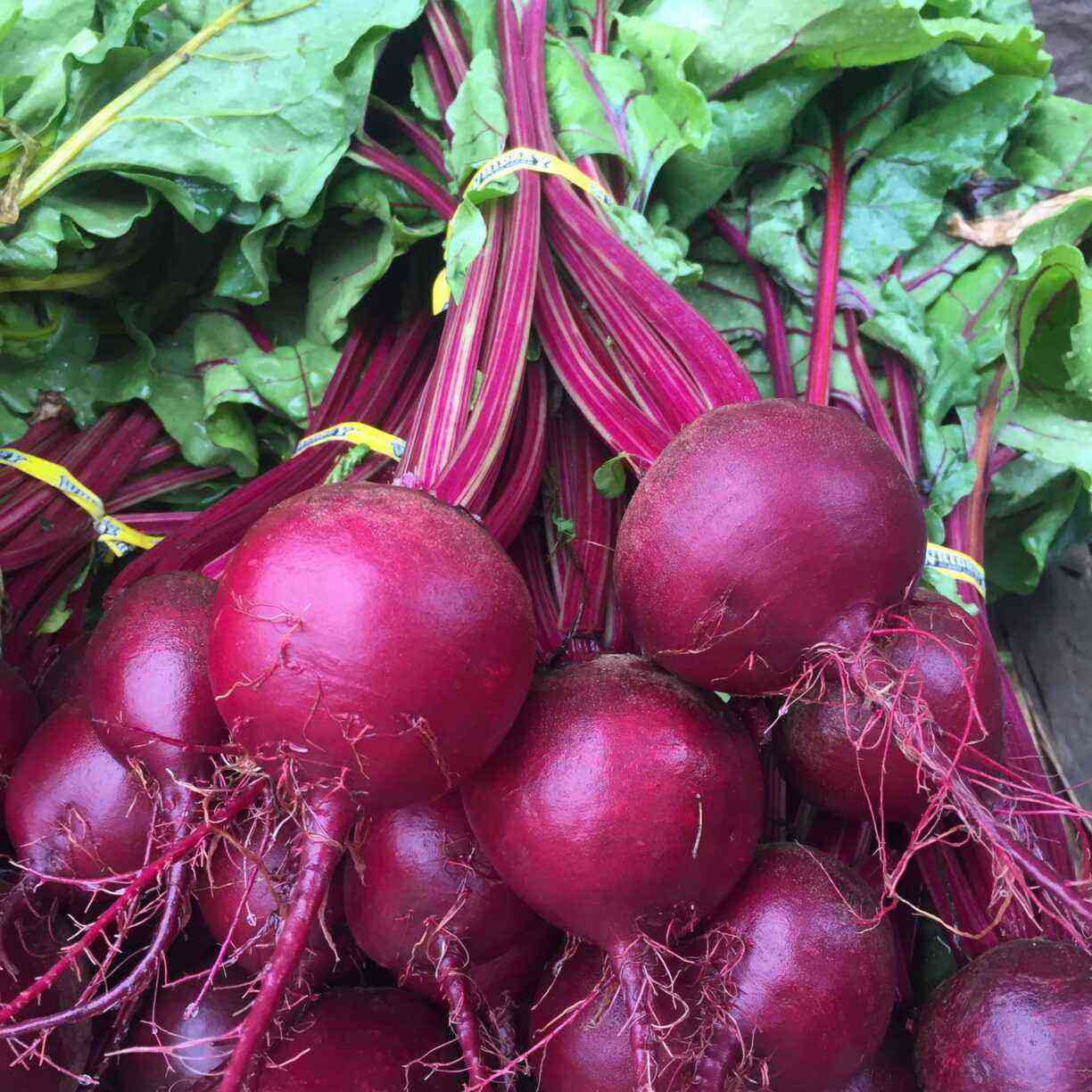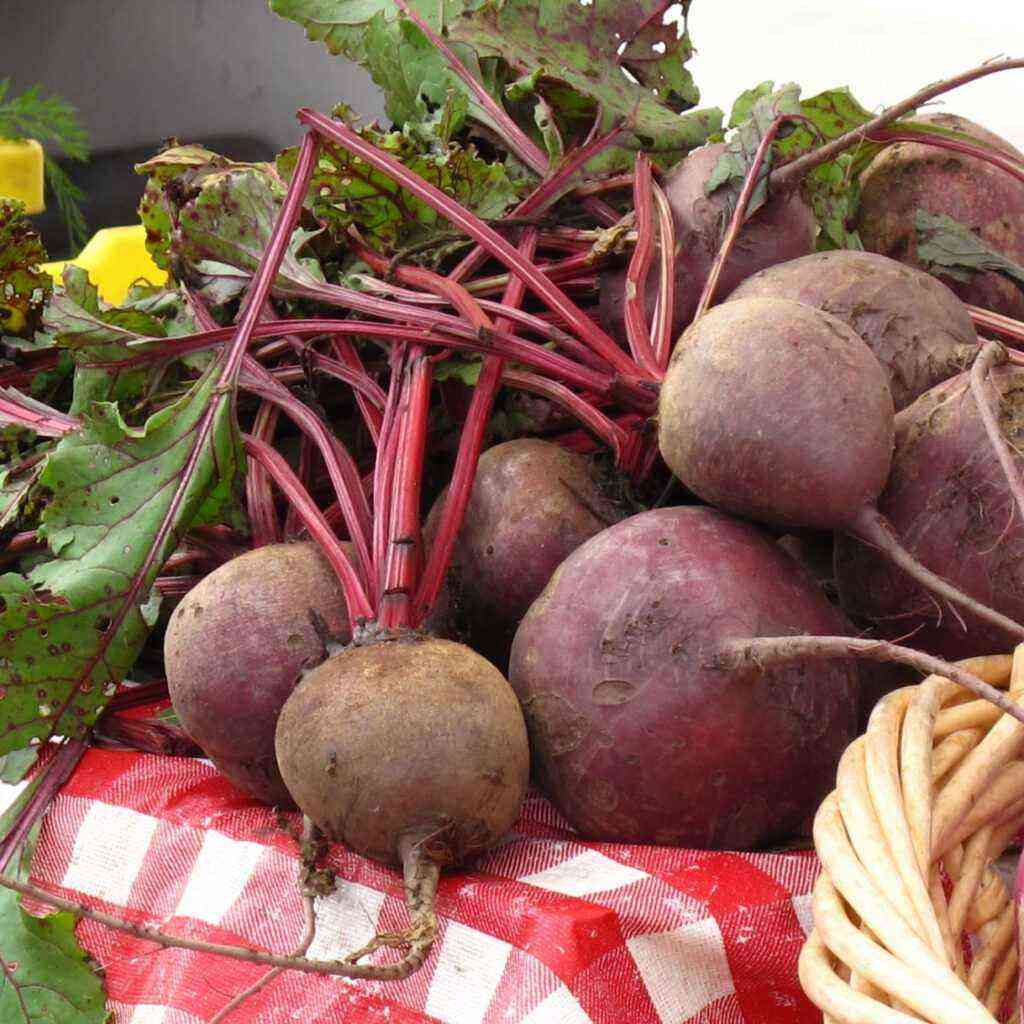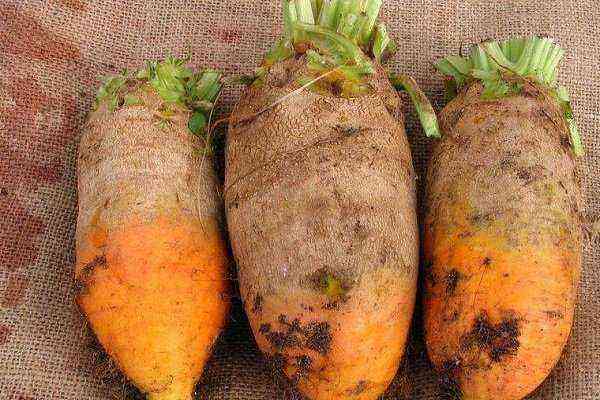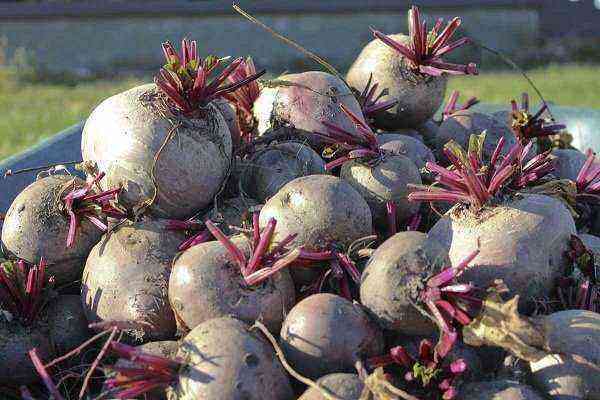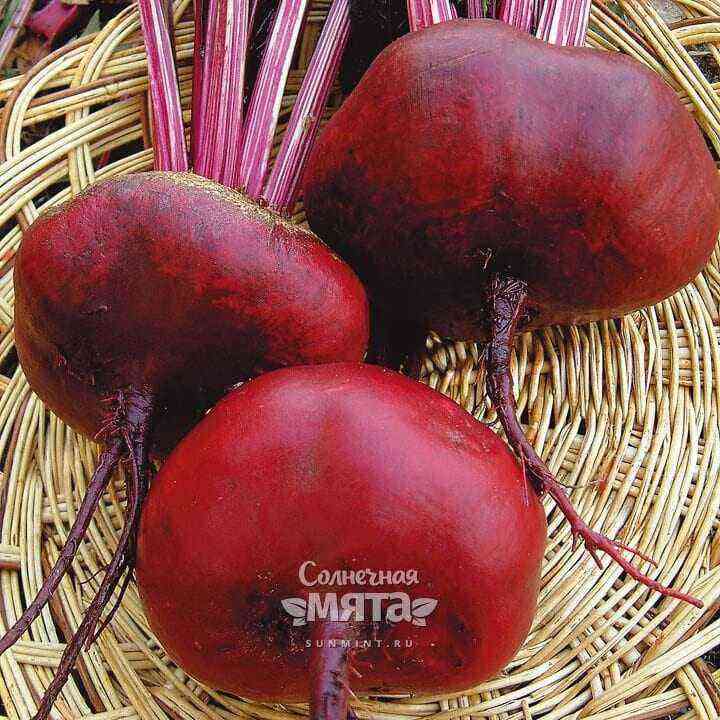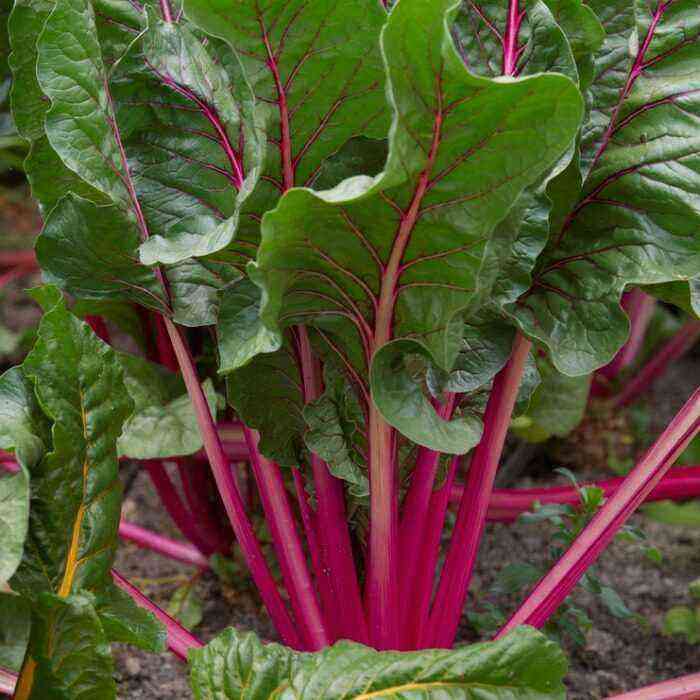Growing beets in a greenhouse allows you to get the earliest harvests of a vitamin vegetable. We will learn how best to plant beets indoors, and how to care for them in order to get delicious root crops.
Greenhouse varieties of beets
There are varieties of beets specifically designed for greenhouse cultivation. They are also suitable for open ground, but only in regions with a warm climate.
Varieties suitable for growing in a greenhouse:
Greenhouse varieties can also be grown in regions with a harsh climate if planted in the summer.
Seedling
By growing beet seedlings, you can bring the harvest closer by 2-3 weeks. Seedlings are usually grown at home. They are sown so that they grow by the time when favorable conditions for growth and development are created in the greenhouse.
Between sowing seeds and planting seedlings in the greenhouse, 3-4 weeks pass.
Seed preparation
Beet seeds are ball-shaped seedlings that are difficult to prepare for pre-sowing. Purchased coated seeds are completely ready for planting – they can be sown without soaking and other processing, wetting only the substrate.
Many gardeners, wanting to activate the germination of seeds, subject them to processing before sowing. But it is carried out only in relation to seeds collected independently, or unprocessed.
Stages of seed preparation:
- Sort. Place the seeds in salted water. All that come up – discard.
- Calibration Remove specimens that differ from the normal size – so that the seedlings are friendly.
- Disinfection. Immerse the seeds in the fungicide solution. Suitable “Fitosporin”, “Vitaros” and others.
- Soak. Put the planting material in a canvas bag and place it in cool water for 24 hours. Then keep in warm water (+24°C) for another 35 hours. This treatment accelerates the emergence of seedlings.
Features of sowing beets
Beet seedlings are demanding on soil moisture, love fresh air – but not drafts, and do not tolerate heat. The optimum temperature for its development is +16°C.
Seedlings are sown in any container – plastic or wooden, individual or common. In the second case, you will have to pick at the stage of the appearance of cotyledon leaves. The best option is glasses designed for one seedling, or peat pots.
How to sow seeds for seedlings:
- Prepare the ground. The best option is to buy a universal substrate. Add wood ash to it – a glass on a bucket of soil.
- Fill seedling containers with soil. Seal it well, pour warm, settled water. Spill the substrate with Fitosporin or another fungicide to disinfect it.
- Sow seeds to a depth of 1-2 cm. If planting is done in separate glasses, place 1 seed in the center. In large containers, arrange the seeds in rows at 2-3 cm intervals.
- Sprinkle the seeds with soil and compact with a plank. Cover the crops with film or glass, and place in a warm place.
Growing seedlings
To grow strong and healthy beet seedlings, it is necessary to provide it with appropriate care.
Optimal growing conditions for seedlings:
- Humidity. Beet seedlings react equally badly to overdried soil and to stagnant water. When watering, it is important to maintain a balance, preventing the soil from drying out and waterlogging. Watering is done regularly, but in small portions. The water that accumulates in the pan after watering is poured out. With increased dryness of the air, the seedlings are sprayed with water at room temperature.
- Illumination. The best place is windows facing south. In regions with late spring, additional illumination is necessary up to 12 hours of daylight hours.
- Temperature. Before germination, the temperature is maintained at + 18 … + 20 ° С, and after their appearance, the transparent cover is removed, lowering the temperature to + 16 ° С.
- Feeding. When using a purchased substrate, they do without additional fertilizers. If the seedlings are grown in a soil mixture prepared on their own, top dressing may be necessary. Apply complex fertilizers on a mineral basis with a priority nitrogen content.
- Hardening. A week before planting, seedlings are taken outside daily, gradually increasing the time of “walks” – from 20 minutes to several hours. It is also recommended to carry out night hardening, lowering the temperature by several degrees.
If the seedlings were grown in a common container, a pick is carried out. She saves seedlings from lack of light and thickening.
Features picking beet seedlings:
- At the stage of cotyledon leaves, seedlings are transplanted into separate containers.
- The soil in new containers should be of the same composition as in the common container.
- Deepen the seedlings a little deeper than in the old container.
- It is recommended to shorten the root a little. Pinching allows you to get a larger root crop in the future.
Land preparation
Beets grow best on sandy and loamy soils. Not only the size of root crops, but also their taste depends on the quality of the soil. On waterlogged soils, beets will grow tasteless, root crops have a liquid, unpleasant taste. On soils with a high content of sand, a similar effect is obtained.
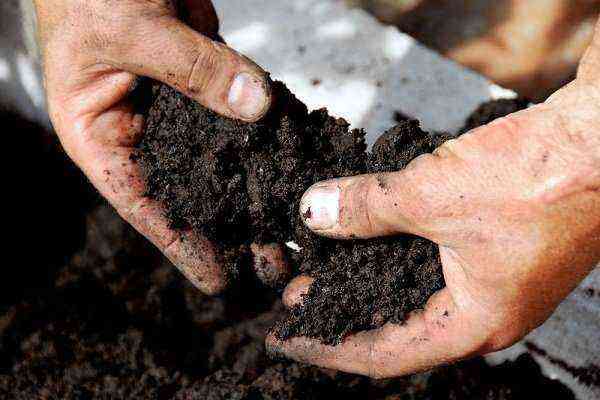
Soil preparation:
- Composition. Beets, like most crops, need loose, light, non-acidic soils. Greenhouse soil is made from:
- garden soil – 1 part;
- peat – 3 parts;
- humus – 1 part;
- sand – 1 part.
- Disinfection. The soil is disinfected before use by any of the existing methods:
- calcination;
- chemical agents;
- freezing.
- Fertilizers. Loosen the finished mixture and spread over the beds. Add ash – one glass per 1 sq. m. and complex mineral fertilizer (dosage according to the instructions).
- acidity adjustment. Beets do not grow well on acidic and slightly acidic soils. To neutralize acidity, in the fall, for digging, add limestone or sand – 0,5-1 kg per 1 sq. m.
Growing beets in a greenhouse, as well as in open ground, you must follow the rules of crop rotation.
Desirable predecessors:
- bow;
- cabbage;
- tomatoes;
- cucumbers.
It is forbidden to plant beets after rutabagas, turnips or celery.
Dates and methods of landing
In the greenhouse, beets are grown through seedlings or direct sowing into the ground. The first option allows you to get an earlier harvest, the second – eliminates the stage of growing seedlings.
Beets are planted in the greenhouse around the second half of April. When planting, they are more guided by the temperature of the air and soil than by the calendar date.
Ways to plant beets:
- Seeds. Between the rows make intervals of 25-30 cm. The seeds are laid out along the grooves or according to a special stencil. The distance between adjacent seeds is 3-4 cm. The embedment depth is 2-3 cm. Crops are mulched with peat or humus.
- seedlings. When the seedlings reach 8 cm in height, they are planted in rows, observing intervals of 15-20 cm. Spaces of 30 cm are left between the rows.
Caring for beets in a greenhouse
Beet is a strong and hardy crop that can grow under adverse conditions. But the task of the gardener is to get a good harvest. And the point is not only in quantity, but also in the quality of root crops. The taste of beets will depend largely on care – fertilizing, watering, etc.
Watering and fertilizing beets
Beets are watered, focusing on the condition of the soil. Just like when growing seedlings, it is necessary to maintain a balance between waterlogging and drying out of the soil.
Principles of watering beets:
- Seedlings after planting are watered every 2-3 days. There is no exact watering rate. It is necessary to monitor the condition of the soil – it should be moist at the entire depth of the roots.
- As they grow older, the frequency of watering decreases. Beets are watered about once a week.
- The average watering rate for adult plants is 10-15 liters per 1 sq. m.
- It is useful to water the plantings with a weak solution of potassium permanganate.
If the soil is prepared and fertilized in accordance with all the rules, then beets do not need top dressing. Unless in the middle of the growing season it is worth adding wood ash to the soil – 100-150 g per 1 sq. m.
Thinning
Beet seeds are seedlings that give several shoots at once. Therefore, after sowing, thinning cannot be avoided.
Excess shoots should be removed immediately after the appearance of the first leaves. Between neighboring plants should be about 8 cm – if a dessert variety is grown, and 10-12 cm – if you need to get larger root crops.
If the extra seedlings are not uprooted, but removed with a small spoon, then they can be transplanted. But this must be done immediately, then the chances that the seedlings will take root are very high.
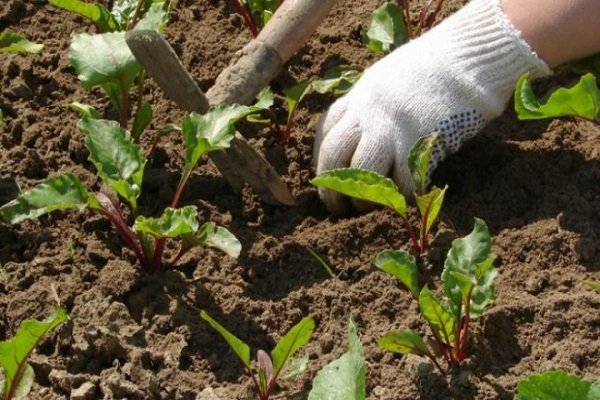
Diseases and pests
Beets have a fairly high immunity. Moreover, there are varieties that are particularly resistant to certain diseases.
Under adverse circumstances and the lack of prevention, beets can be affected by such diseases:
- Korneed. Occurs due to waterlogging. It usually appears in the early stages of the growing season. Plants turn yellow and die. Disease prevention:
- the introduction of boron dressings;
- notification;
- seed dressing.
- Phomosis. Brown spots appear on the lower leaves, and then black dots. Treatment:
- application under the root of borax – 3 g per 1 sq. m;
- spraying with a solution of boric acid (for 10 liters of water – 5 g).
- Cercosporosis. Light spots with a red border appear on the leaves. Then the leaves dry, and the root crops deteriorate. Treatment is reduced to treatment with fungicides. Seeds are treated with Agat-25 before sowing. Potassium supplements are also recommended.
- Fusarium rot. Attacks damaged plants. Cracks appear on the roots, and the lower leaves wither. We need preventive spraying with boron.
Most often, beets are affected by such pests:
- scoops;
- thyroid;
- aphid;
- blocks;
- common and mining flies.
Plantings are best treated with folk methods, using insecticides only in the most extreme situations.
Insect control methods:
- Against aphids, an infusion of onion peel or wormwood helps. On a bucket of water take 1 kg of finely chopped dry mass. Boil 15 minutes. Insist 3 hours and filter.
- Aphids and shield-bearers are repelled by wormwood branches placed between rows.
- Fleas are expelled by dusting with ash or tobacco dust. Spraying with infusion of ash also helps. It is prepared by diluting 1,5 tbsp. l. in a bucket of water. Insist ash for 1 day.
- Against flies, shield-bearers and other pests, bacterial preparations or insecticides are used, for example, Aktar, Karbofos, Iskra.
Growing beets in a greenhouse in winter
To grow vegetables year-round, greenhouses are heated. Then vegetables can be harvested all year round. True, their cost will be much higher due to heating costs, so this method is usually used when growing vegetables for sale.
greenhouse requirements
In a year-round greenhouse, plants should be equally comfortable at any time, including in winter.
Requirements for a winter greenhouse:
- the ability to provide the desired temperature and humidity;
- a lot of sunlight and artificial lighting;
- solid foundation;
- optimal design – with a pitched roof;
- the presence of a vestibule and double doors;
- the possibility of ventilation;
- heating source – for example, an electric boiler or a wood-burning stove;
- on both sides – pipes for heating.
It is recommended to deepen the greenhouse to reduce heating costs.
The most popular greenhouse design option is a welded frame. And as a coating use:
- industrial tempered glass;
- polyethylene film;
- cellular polycarbonate.
Preparation of seedlings
Seedlings for growing in the winter in a greenhouse can be grown in two ways:
- At home. This option allows you to save on heating.
- In a greenhouse. This option is usually used when a large number of seedlings are needed. It is recommended to grow seedlings in a separate greenhouse, as the conditions for seed germination are different from the conditions in which adult plants grow. At the germination stage, lower temperature and higher humidity are needed.

Seedling agrotechnics for winter cultivation is the same as for the spring-summer season. The soil is prepared according to the same plan as when planting in unheated greenhouses.
Features of care
To grow vegetables in the winter in a greenhouse, you need increased attention to growing conditions and caring care.
Greenhouse conditions in winter:
- The average daily temperature is maintained at +18 to +22°C.
- When there are severe frosts on the street, airings are canceled.
- When the temperature outside rises, the greenhouse is ventilated twice a day.
- Plantings are watered 1-2 times a week, as the soil dries up.
- The water temperature should be the same as the air temperature in the greenhouse.
Beet yield when grown in greenhouse conditions
In greenhouses, mainly varieties with early maturation are grown. The yield of early beets in a greenhouse depends on the variety and growing conditions. It can be from 1,8 to 8,2 kg per 1 sq. m.
Ways to increase productivity:
- Use of suitable soils. It is forbidden to use podzolic and sandy soils.
- Irrigation compliance. Overmoistening is prohibited.
- Application of fertilizers. It is forbidden to bring manure into the greenhouses. The soil is fertilized with humus and superphosphate.
- Good seeds are selected by sizing, sorting and soaking.
Growing beets in a greenhouse is not a priority – this crop grows well in open ground. But if the gardener expects to receive early harvests, greenhouse conditions are indispensable.
